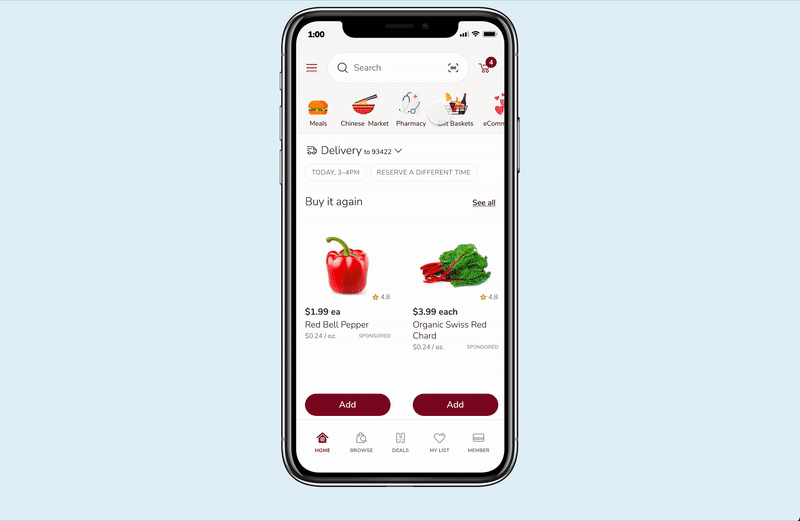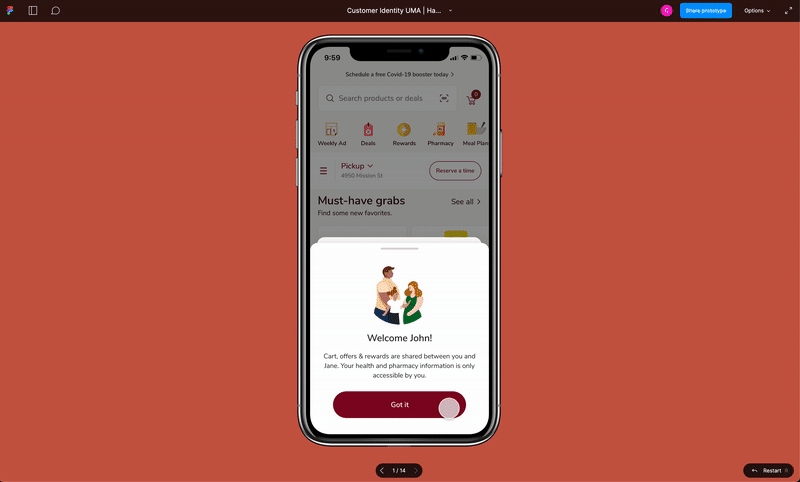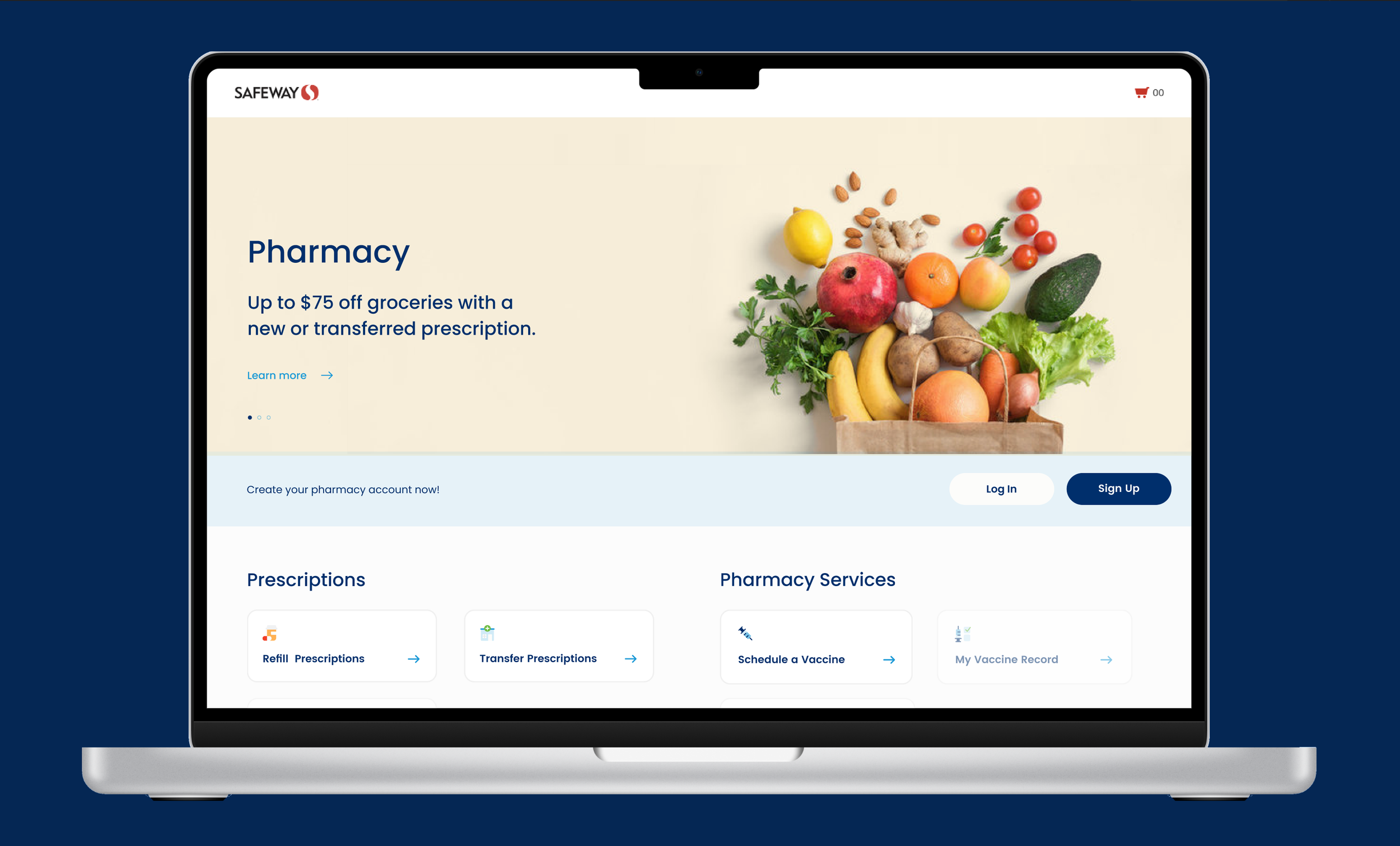
ALB Identity Onboarding
When Albertsons began the initiative to integrate Pharmacy into their Grocery app experience, the unique challenge of needing shoppers to have individual identities became an opportunity to introduce shared household features.

Albertsons Integrates Health
Albertsons has a unified mobile app for all of their grocery stores, but historically Pharmacy has been a separate app experience. The initiative to bring Pharmacy into the UMA as “Health” presented a challenge: many current shoppers share credentials with their household members, but Pharmacy is subject to HIPAA restrictions and required unique identities for each user, as well as expanded security for account protection.

Challenge goals
Create unique identities for each shopper, but allow them to continue sharing shopper benefits (i.e. memberships, coupons, and deals) with their household, and establish trust with the user that their Health experience was secure.
As the product design lead for the mobile app experience, I lead a team that worked with Albertsons stakeholders to design an account creation experience for Health, as well as key areas for household benefits to be shared.
How might we make users feel they are benefited by the creation of a household account, and confident in the security of their private health information?

Initial Research
Albertsons has data to support the knowledge that many of their shoppers share their credentials as a household, the initial research also looked at what percentage of users currently use the separate pharmacy experience. The results were that a small percentage of users engage with pharmacy because of a lack of awareness that the service exists. Bringing Pharmacy into the UMA increases visibility, but the unique identity requirement raised questions around how users sharing credentials would be affected. The most important parameter was “Do No Harm”: any service that was available under multiple users sharing one credential should remain available once users had individual identities, particularly those that are paid for. Additionally, the expanded security requirements made it necessary to log in to pharmacy separately from grocery.

Competitive Analysis
Many companies have faced similar challenges with the rollout of their pharmacy experiences. Looking at competitors such as Walgreens, Walmart, and Amazon gave us insight into the tolerance of friction, as well as how these other companies approached the integration of health services with the same expanded security requirements. We also looked at other account create and log in experiences for shopping where users frequently share credentials, like Instacart, and Fresh Direct. Finally studying the security measures of online banking such as Citi, and Intuit.
Personas
My team used three personas based in user research as guides for our work:
Jane - the primary user and owner of the existing grocery account
John - Jan’s partner who usually logs in under her credentials, the secondary user
Jim - an adult (18+) member of their household who uses the account infrequently, but needs to manage his own prescriptions, the tertiary user


User Journeys
The account create and login experience is optimized for primary users. Secondary and tertiary users needed a little more information and value proposition around householding, to reduce confusion around the creation of their identities.
How might we ensure users trust this experience and feel continuity throughout?

Create Account
Account creation for Health requires identity verification that can be used to confirm insurance. This extra information plus the additional security required by stakeholders, in the form of a secure PIN, puts a new account creation flow within the app. Each user needs to be under a unique identity for health, so those using shared credentials need to buy into this. Value proposition and educating the users became paramount parts of this flow.

The primary user encompases both single users and primary household account members. Because they are already logged in to a grocery ID, we are able to optimize their flow to quickly create their health account

Users logged in under a shared credential who are not the primary user need a little more information in order to establish trust that their shopping experience will not be affected and what the benefits are of account creation. This extra step is important to establish context and trust

Under new apple guidelines we needed to offer a guest mode. This begged the question: how do we make this a seamless experience for users who are not logged into the grocery app to start? We needed to allow users to create a grocery account prior to the creation of their health account OR log into their grocery account prior to creating a health account with one seamless flow.




Return To Grocery & Householding
When Secondary users return to grocery after creating their health account, they receive some light onboarding to show them how their newly established household works and what benefits they can share.
Primary users will get a notification if someone is added to their household, but otherwise their experience is unchanged.

Web Experience
Web presented a unique challenge to mobile as it is a much less streamlined environment users are rarely logged in to start, so the flow had to begin with grocery’s login and then the step up to pharmacy in a single continuous flow. We emphasized an agnostic login experience and made sure that there was always the option to change accounts.
Next Steps
This MVP launch covered the essential foundations of this new experience. The first step will be to look at the data from this launch:
What is the adoption rate?
Are users taking advantage of the household experience? This is measured by:
Additional members added to shared grocery account
Increased grocery conversion based on improved recommendations